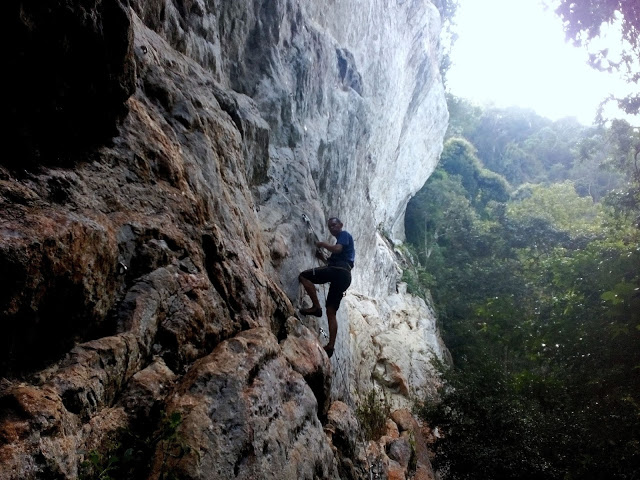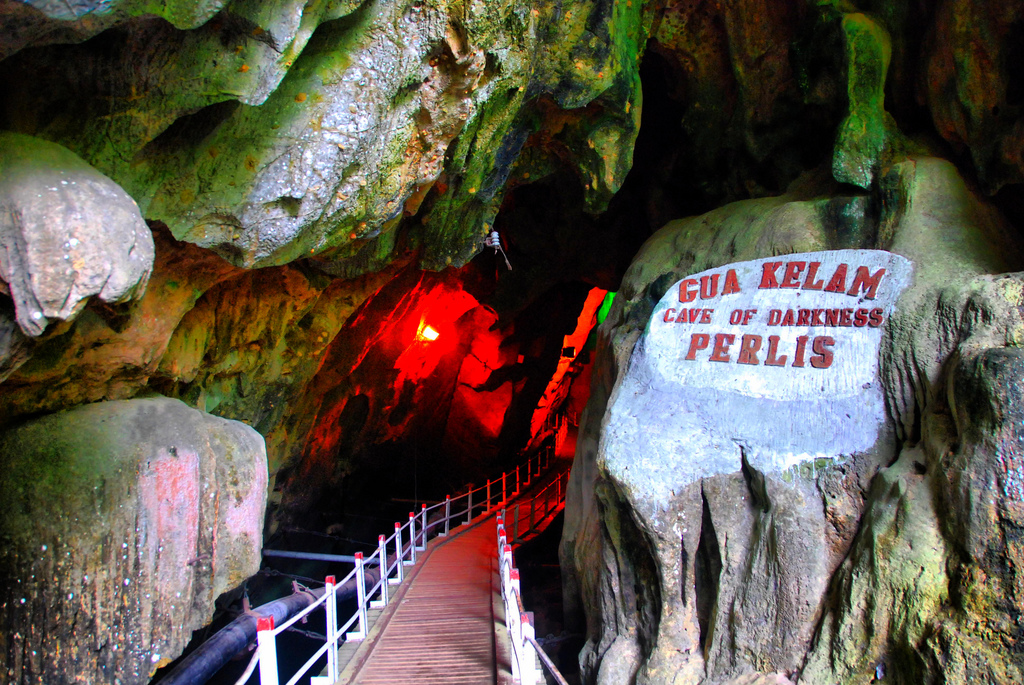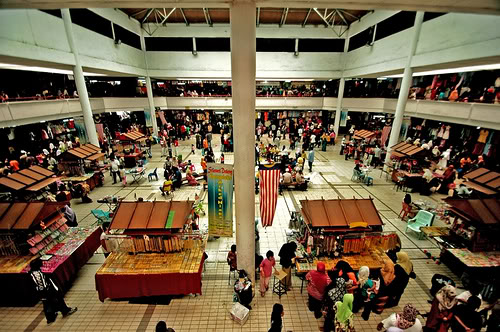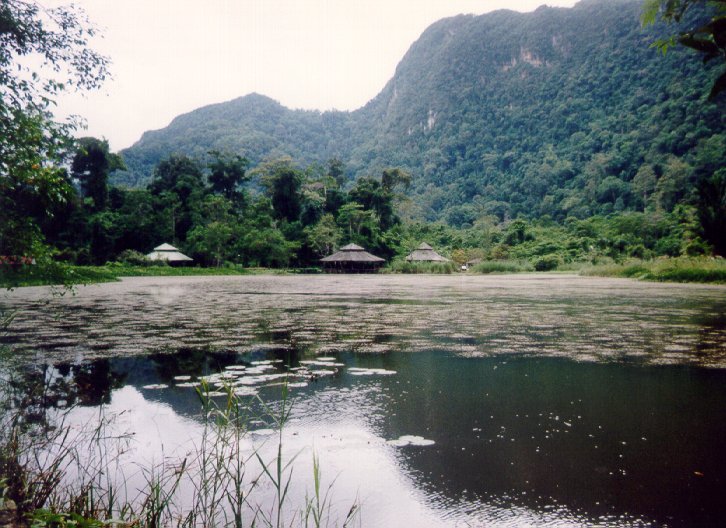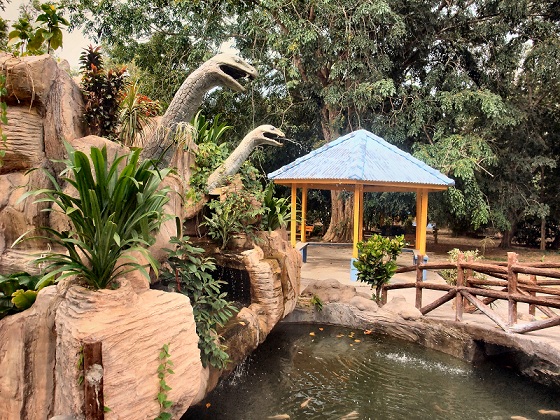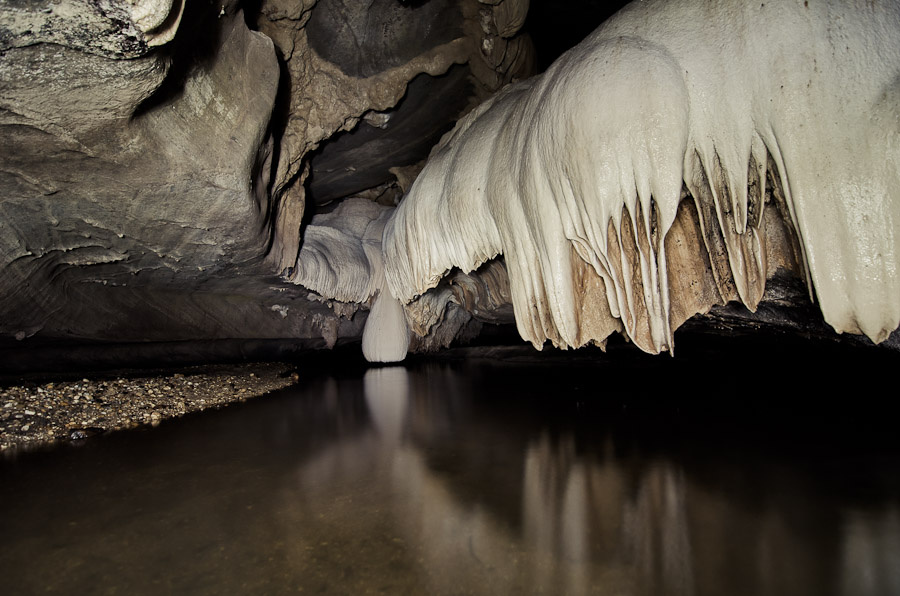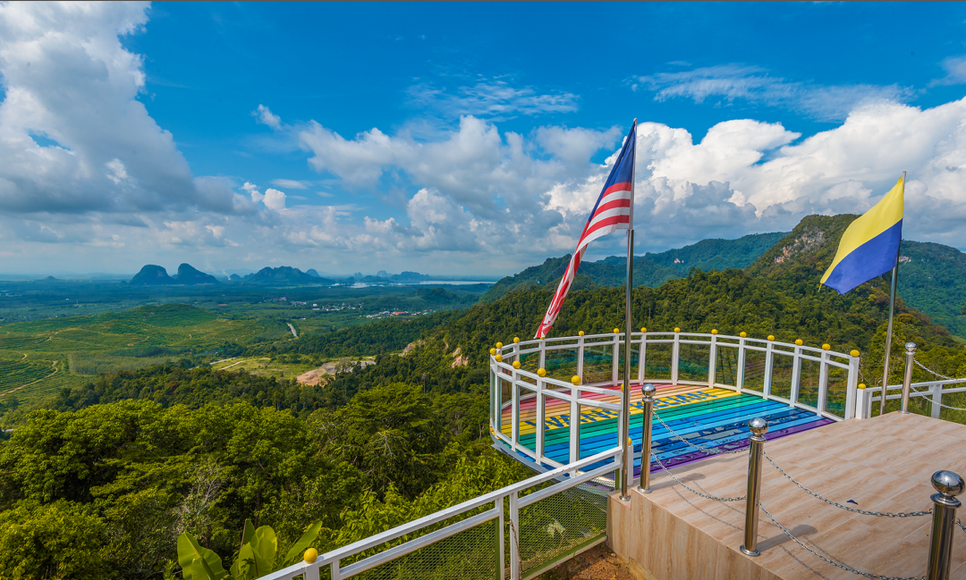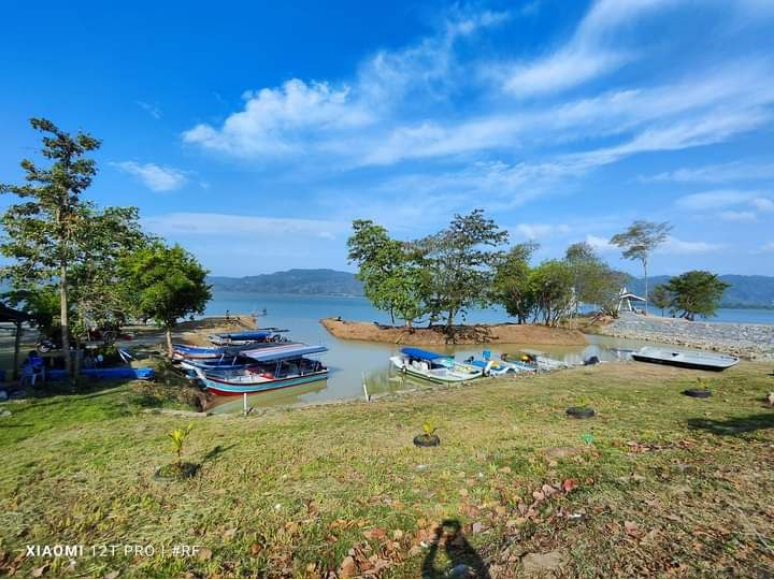Bukit Keteri
Bukit Keteri, a well-known karst limestone formation, is located in the state of Perlis within the northern region of Peninsular Malaysia. The spectacular limestone towers surrounded by endless fields of green paddy is a sight to behold. A short 20-minute trek through the paddy fields to get to the foot of the hill is enough to give you a sense of zen-like elation. The climb begins from inside a cave where the arched opening looks out over the surrounding countryside and the local mosque. From here, it’s a straightforward climb up the limestone face of the hill. Climbers would take just a few hours to reach “Belly Button Window” which offers a scenic view of Bukit Keteri and its surroundings. At the peak, climbers will be well-rewarded with panoramic views of the surrounding flat lands. For an even spectacular experience, it’s best to attempt the climb in the afternoon and stay on to witness the beautiful sunset over the land below. The climbing routes at Bukit Keteri were discovered by the Mammut Expedition to Malaysia in 2007. The cave formations of Bukit Keteri are actually one gigantic cave inside the dome of rock where the largest “room” inside the cavernous system can accommodate a jumbo jet.
Gua Kelam
One of the most distinctive caves in Malaysia is a 370-metre long limestone cave near the small town of Kaki Bukit (literally 'foot hill') called Gua Kelam (Cave of Darkness). Located about 33km north of Kangar, the state capital, Gua Kelam Recreational Park is popular for its enchanting 'cave walk' where you can enter from one end of the cave and come out at a different location. The only path to the cave is via an eight-foot wide wooden suspension bridge. This bridge links Kaki Bukit to the Wan Tangga Valley, a valley on the opposite end of Gua Kelam. Back in 1935, an Englishman saw the water pathway as a brilliant method to transport tin ore from a mine located near the stream entrance through the underground cavern to Kaki Bukit. Now, locals and tourists make their way through the cave via a brightly lit wooden walkway inside the cave. You can still find remnants of the tin mine operation within the cave. As you make your way through the cave, the whispers of a swirling dark subterranean stream, together with the squeaking bats and dripping water from the stalactites, form a concerto of natural sounds. It sounds a bit spooky, but adds to the mystery of a cave that was was once the home of Stone Age men.
Kota Kayang Museum
According to history, the 4.84 acres of land where the State Museum now stands was granted by Raja Syed Alwi to his younger brother, Syed Salim bin Syed Muhammad al-Jafri, who was a senior minister to the King. Towards the end of the 19th century, Syed Salim built his residence and stayed there with his family until it was sold to the State Government just after the signing of the 1909 Bangkok Treaty. After that, the building became the official residence of the state British Advisors. The first British Advisor, Mr. Meadow Frost and his successors resided in the house until the Second World War in 1941. From 1941 until 1943, the building was taken over by Japanese Military Administration, while from 1943 until 1945, the Thai Military Government took over the building. After Independence, the building became the Perlis Chief Minister's official residence. It became popularly known as Rumah Tetamu (Guest House) after it was vacated by Chief Minister Dato' Jaafar Hassan in early 1980s. In 1991, the building was demolished to make way for the construction of the present State Museum, which is structurally identical to the old building. The Kompleks Warisan Negeri (State Heritage Complex) is also within the compounds of the State Museum.
Kuala Perlis
The major activity found here is fishing and many superb seafood restaurants can be found in this small fishing town. Not only is seafood fresh in Perlis, but it is relatively cheaper than it is in the capital city. Have the fun of eating seafood is selecting the exact critters that you want seasoned, cooked, fried, barbequed, grilled, or sauted, and served to you.
Padang Besar
This border town is the merging point for Thais and Malaysians. Many Malaysians travel up to Thailand through this point and likewise for their Thai counterparts, on shopping, business or recreational trips. The railway station has a long platform, manned by Malaysians on one side and the Thais on the other. Besides the Immigration checkpoints and some signs, it is hard to distinguish where the border actually lies because culturally, both sides are so enmeshed. Beyond the rail tracks is Pekan Siam, bargain-hunters' paradise. The town is filled with textiles, clothing, handicraft, foodstuff, fruits and souvenirs.
Perlis State Park
The Park is situated on the longest continuous range of limestone hills in the country, called the Nakawan Range. The Nakawan Range has beautiful, heavily forested slopes, sheer cliff faces, streams and extensive cave systems. Some of the major attractions in Perlis State Park includes the various caves such as Gua Kelam and Gua Wang Burma which is located within the 500 year-old Setul limestone formation. The Park consists of Mata Ayer Forest Reserve and Wang Mu Forest Reserve with a total area of about 5000 hectares. The park provides the perfect setting for activities such as the Stumed-tail Macaque and plants like ginger, ferns and balsams endemic to the state are found here. Visitor can stay in hostels and chalets or camp at the designated site. Those intending to visit are required to obtain permission from the Perlis State Park management and engage the services of a ranger or qualified guide.
Snake and Reptile Farm
Surrounded by the Bukit Bintang Forest Reserve near Sungai Batu Pahat, the Snake and Reptile Farm is located 10km north of Kangar, the state capital. The Snake Farm is a research facility set up to develop anti-venom for snakebites. Housing more than 20 species of snakes, as well as crocodiles and monitor lizards, it is the only snake farm in Malaysia. The farm has open-air enclosures as well as enclosed exhibits. Handlers will assist you to pose with tame snakes for photographs.
Wang Burma Cave
Wang Burma Cave is one of the most popular caves within the Perlis State Park. It is a haven for spelunking. The cave’s stalactites and stalagmites resemble pillars, curtains and cascades which were formed over millions of years. Enthusiasts can explore the cave at a leisurely pace, or climb, crawl and squeeze between narrow passages and muddy tunnels. Some caves such as Gua Kelam, are known for its subterranean rivers, which have been the site of tin-mining activities. International speleologists have visited Malaysia to document the cave’s history and fauna. The journey starts with an uphill jungle-trekking guided by an experienced Forest Ranger. Along the route, tourists will learn about various medicinal and poisonous plants and trees. The journey will take approximately 40 minutes to reach the entrance of the cave. Well-known for its streams and exotic species of insects and fungi, the cave system is divided into two main caves: Wang Burma Satu, the less challenging cave with a more scenic background. It has unique rock formations comprising of stalactites, stalagmites and columns. Wang Burma Dua is physically and mentally challenging with its dark hooks and turns, narrow passages and muddy tunnels – adventurer tourists will have to crawl and squeeze their way through to reach the amazing water-worn rock formations in the inner part of the cave. Tourists are advised to get a qualified guide and permission from the Perlis Forestry Department before going for the cave exploration. The total time to explore the entire Wang Burma cave system will take approximately 3 1/2 hours. Buddy system is advisable.
Wang Gunung
Situated at the Malaysia – Thai border, Wang Gunung is well-known among rock climbers for its uniqueness and challenges. The mountain stands at 499.1 meters creating an imposing backdrop to the nearby Putra Golf Club. Most of the stones that create the Wang Gunung mountain is connected to the formation of Machinchang, Setul, Kubang Pasu and Chuping. There are several areas with great potential to be promoted as Geo Heritage sites and Geo Tourism sites. These sites are Gua Kelam, Gua Cenderawasih, Gunung Perlis, Gua Wang Burma, Bukit Kubu tropical forest, Utan Aji, Guar Geteri and Wang Gunung. Introducing these sites as Geo Heritage and Geo Tourism sites will create added value while creating awareness among local and international tourist to preserve the area. It will also create opportunities for research by local and international students and job opportunities for the local community. The climb to Wang Gunung will take approximately 2 - 3 hours and it has 14 pit stops for climbers to rest before reaching the peak. Climbers need to face various obstacles before reaching the mountain. Among the toughest obstacle is to climb the steep 70 - 80 degree track. Every climber is advised to prepare extra attire and equipment before climbing. A Permit is necessary to go on the trail. If you get caught on the trail without a permit, it is considered trespassing and well be prosecuted by law. The Permit can be obtained at Perlis Forestry Department for RM5/ person. Wang Gunung is located in the state of Perlis. Visitors can take a bus or drive from the North-South (PLUS) Highway, take the exit via Changlun and take the Changlun-Kuala Perlis highway to Kangar. From Kangar, continue towards - Padang Besar. Continue the journey heading to Sg. Batu Pahat. Alternatively, tourists can board the ETS train from Kuala Lumpur Sentral Station to Arau, Perlis and the journey takes approximately 5 ½ hours.
Wang Kelian View Point
Located at an elevation of 304 meters above sea level, it is situated on the route to the Malaysia-Thailand border. The journey here takes about 30 minutes from Kangar town, passing through several peaceful towns and villages. Wang Kelian View Point is definitely a must-visit location if you are in Perlis. This is also a popular spot for people to see the carpet of clouds, depending on the weather conditions, and to enjoy the beautiful natural landscape of Perlis.
Tasik Timah Tasoh
Tasik Timah Tasoh is not just any ordinary lake, it's a breathtakingly beautiful one, so much so that it has been chosen as a filming location for music videos and dramas due to its unparalleled beauty. Around the lake, you'll find lush fruit orchards with fruits like durian, rambutan, mango, and Durian Belanda. If you're staying at the Tasoh Lake Resort & Retreat, you can pick these fruits straight from the trees! This is the real village experience! For those who love fishing, come cast your line in this lake, which is home to various freshwater fish like Gelang Pam, Haruan, Ubi, Talapia, and Keli. Once you've caught your fish, simply grill them by the lake and enjoy the fresh catch while relaxing in the gazebos at Tasik Timah Tasoh.
Credit to Malaysian Tourism

